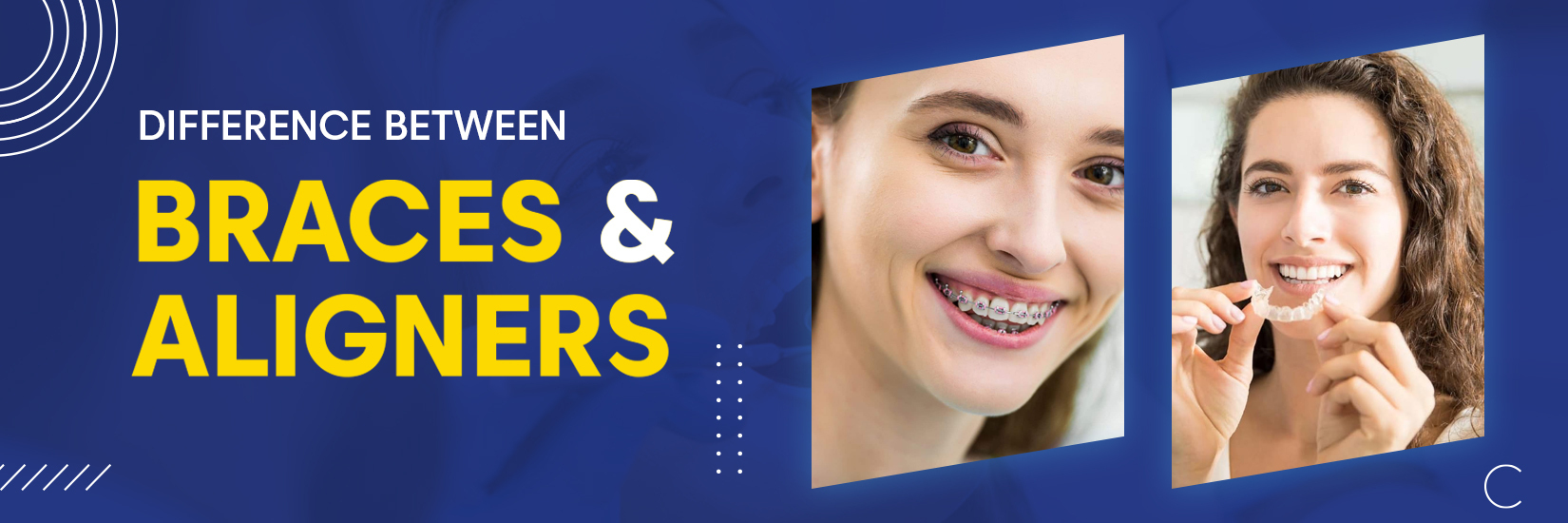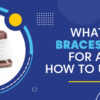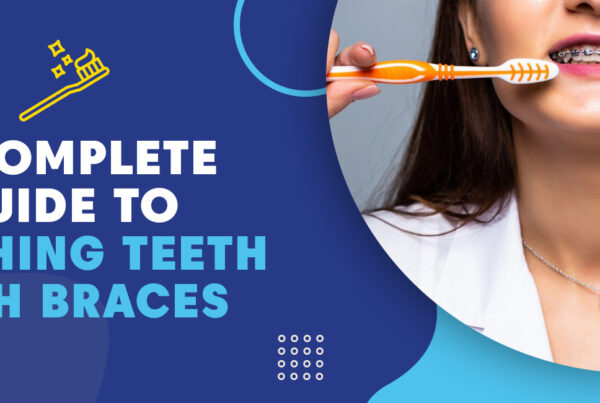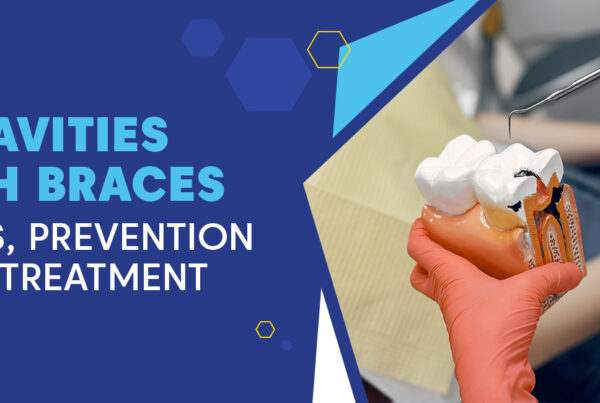- Metal Braces: Does This Traditional Dental Technology Have a Future?
- Advantages of Metal Braces
- Disadvantages of Metal Braces
- Clear Aligners: Align Your Smile Discreetly
- Advantages of Clear Aligners
- Disdvantages of Clear Aligners
- Clear Aligners vs. Braces: What’s A Better Option?
- What type of orthodontic treatment is best for me – Come to Orthodontic Experts!
- FAQs
Are you longing for a confident smile, but can’t decide between braces and aligners? Picture this: you’re on the brink of adulthood, about to step into the real world.
The pressure is on to present yourself to the world with poise and self-assurance. But here’s the catch – misaligned teeth are casting a shadow on your confidence. We understand the pain points you’re facing – the discomfort, the doubts, the desire for a stunning smile that will illuminate your life.
Join us as we navigate through the world of orthodontic treatment, empowering you to make a well-informed decision.
Metal Braces: Does This Traditional Dental Technology Have a Future?
Metal braces have long been a staple in orthodontic treatments, but with the emergence of newer technologies like clear aligners, some may wonder if metal braces still have a future in orthodontics. Let’s explore the advantages and disadvantages of metal braces and discuss their place in modern dental practice.
Advantages of Metal Braces:
1. Effective and Reliable: Metal braces have a proven track record of successfully treating various orthodontic issues, such as crowded or crooked teeth, gaps, and bite misalignments.
2. Cost-Effective: Metal braces are often more affordable compared to alternative treatments, making them a popular choice for patients looking for effective yet budget-friendly orthodontic solutions.
3. Long-Term Results: Metal braces exert constant pressure on teeth, gradually shifting them into the desired position. This consistent force allows for long-lasting results once the treatment is complete, ensuring a beautiful and straight smile for years to come.
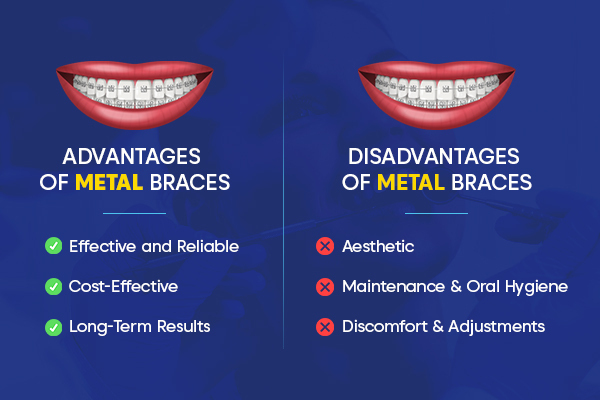
Disadvantages of Metal Braces:
1. Aesthetics: One of the primary concerns with metal braces is their noticeable appearance. The wires and brackets are highly visible, which can make some individuals self-conscious about their smile during the treatment period.
2. Maintenance and Oral Hygiene: Metal braces require extra attention to oral hygiene as they can trap food particles, leading to plaque buildup and potential tooth decay. Regular brushing, flossing, and dental check-ups are essential for maintaining good oral health while undergoing treatment with metal braces.
3. Discomfort and Adjustments: The nature of metal braces involves periodic adjustments by the orthodontist, which can cause discomfort or soreness for a few days after each appointment. Patients may also experience temporary speech changes or mouth irritations during the adjustment phase.
Clear Aligners: Align Your Smile Discreetly
Clear aligners are custom-made trays that gradually move your teeth into the desired position. These trays are made from a durable plastic material and are virtually invisible when worn. Every few weeks, you will receive a new set of aligners that gently and precisely guide your teeth into alignment.
Advantages of Clear Aligners:
There are several key advantages of clear aligners that make them an attractive choice for many individuals seeking orthodontic treatment:
1. Discrete: Clear aligners are nearly invisible, making them an excellent option for adults and individuals who prefer a more aesthetically pleasing treatment. You can confidently wear them without drawing unnecessary attention to your orthodontic journey.
2. Comfortable: Clear aligners are made from smooth and comfortable material, reducing the risk of oral irritation compared to traditional braces with brackets and wires.
3. Removable: Unlike braces, clear aligners can be easily removed for eating, drinking, brushing, and flossing. This means you can maintain your regular oral hygiene routine without any hassle.
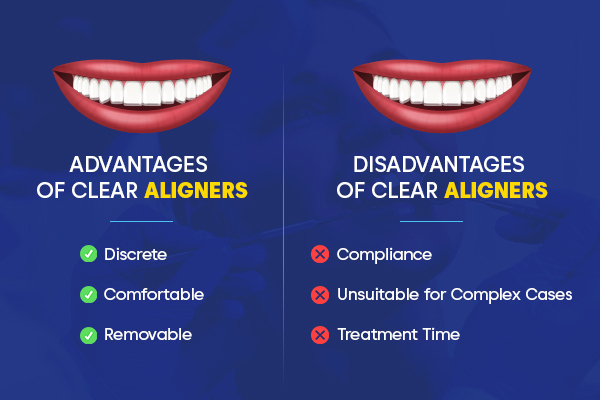
Disadvantages of Clear Aligners:
While clear aligners offer numerous benefits, it’s essential to consider the potential downsides as well:
1. Compliance: Clear aligners require strict adherence to the treatment plan. They need to be worn for at least 22 hours a day to maximize their effectiveness. If you’re someone who may struggle with consistently wearing the aligners, traditional braces could be a better option.
2. Unsuitable for Complex Cases: Clear aligners work best for mild to moderate orthodontic issues. Complex cases involving severe misalignments or bite problems may require traditional braces for more targeted and controlled movement.
3. Treatment Time: In some cases, clear aligner treatment may take longer compared to traditional braces. This is because aligners move teeth in smaller increments at a time and the treatment timeline can vary depending on the individual case.
Clear Aligners vs. Braces: What’s A Better Option?
Clear aligners and traditional braces are both effective solutions for straightening teeth, but they achieve the desired results in different ways. Let’s find out: what’s better braces or aligners?
| Feature | Clear aligners | Braces |
| Appearance | Nearly invisible | Metal and/or ceramic brackets and wires |
| Comfort | Generally more comfortable than braces | Can irritate the cheeks and gums |
| Removable | Yes | No |
| Treatment time | 12 months | 18-24 months |
| Cost | $3,000 to $8,000 | $3,000 to $7,000 |
| Suitability | Can treat mild to moderate orthodontic problems | Can treat mild to severe orthodontic problems |
What type of orthodontic treatment is best for me – Come to Orthodontic Experts!
In conclusion, when considering the best orthodontic treatment for you, the decision between braces and aligners depends on various factors.

Braces, with their fixed nature, are effective in correcting a wide range of dental issues, including severe misalignments. On the other hand, clear aligners provide a discreet and removable option for treating mild to moderate alignment problems.
If you’re not sure which one is right for you, just reach out to Orthodontic Experts. Make an appointment today to make your dream smile a reality!
FAQs
What is the difference between braces and aligners?
The primary difference between braces and aligners lies in their structure. Braces consist of metal or ceramic brackets bonded to the teeth, connected by wires and elastics. Aligners, on the other hand, are clear, removable trays made from a smooth plastic material.
Which is more comfortable, braces or aligners?
Comfort is subjective and can vary from person to person. Initially, braces might cause some discomfort due to the presence of brackets and wires. However, aligners are generally more comfortable as they are smooth and don’t have any metal components.
What are the pros and cons of braces?
Braces offer precise tooth movement, making them ideal for complex orthodontic cases. They are fixed and cannot be removed, ensuring continuous treatment. However, braces require regular adjustments and may cause temporary discomfort.
What are the pros and cons of aligners?
Clear aligners provide the flexibility of removal, allowing you to eat, drink, and brush your teeth without any restrictions. They are virtually invisible, making them a popular choice for those conscious about their appearance. However, aligners require discipline in wearing them for the recommended time each day and might not be suitable for complex cases.


